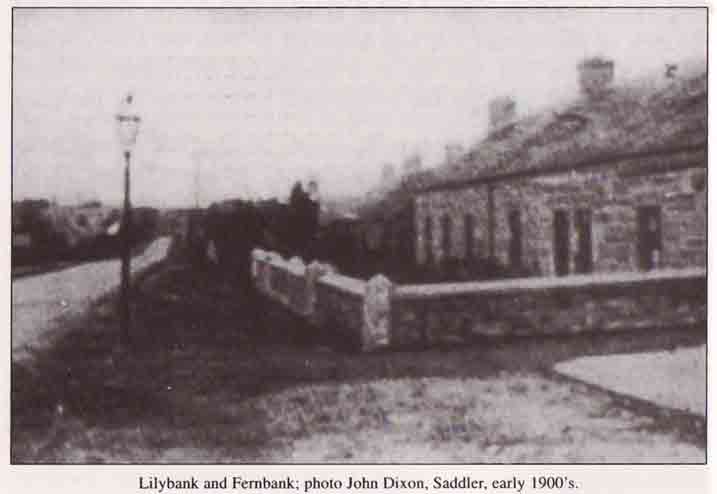|
Development of
Balbeggie village
33. Birchbank 13. Arran Cottage/Laurelbank
At the end of the 18th Century, the land on which
Balbeggie village was to take shape was owned by Andrew Murray of Murrayshall. It was an insignificant place on the “The Cottage is a very desirable family residence. The situation is
healthy and desirable. The house consists of six apartments, well furnished
and oil painted, with grates, ovens, presses etc. The garden is well stocked
with fruit trees and bushes and there is an abundant supply of most excellent
water.” But the
Cottage was almost certainly in a class of its own. A typical dwelling might
have been a ‘but and ben’ longhouse. The tenant
farmer occupied the ‘but’ and his servant’s family the ‘ben’.
A cottage occupied solely by labourers would often accommodate several
families. Sometimes cattle occupied one end of the building. Even in the
early 20th Century such a cottage
At
the end of the 18th Century a new turnpike road from Inches Feu (West) [6],
a half-acre (Scots) plot of land bounded on the east by the turnpike road and
on the west by ‘a road leading from the St Martins Road to the St Martins
burn’, may have been feued out as early as 1828 to one John Inches, according
to John Gwynn*. John Inches was a weaver who was born
in Lethendy parish in 1789. He was an established resident of Balbeggie by
1828, when he appeared as a procurator or advocate on behalf of John McGregor
and his wife Mary Spence for the purchase of their land at Balbeggie Cottage.
He remained a bachelor and probably lived in the same house, along with his 3
unmarried sisters, until his death in 1866. The house was named ‘Inches Feu’
by the 1851 Census Enumerator. In 1857 his life-rent entitlement to stay in
the property was confirmed by William MacDonald of St Martins, who had taken
over from the
Struan Cottage
Inches Feu (East) [16] was
on the east side of the turnpike, opposite Struan
Cottage, and is known today as Rowanbank. It is not known when the feu was
first occupied. Robert Inches, a Shoemaker, may have settled there when he
and his family first came to Balbeggie from Bankfoot between 1812 and 1819 –
their son Thomas was baptised in the
Rowanbank
MacKenzie’s Feu [18]
was 3 plots south of Inches Feu on the east side of the turnpike road. It was
first feued in 1834 and 2 adjoining cottages built there. David Inches, the
unmarried employer of 4 men in his Shoemaking shop lived in one cottage with
a servant in 1851. In 1852 the feu is said to have been acquired by Robert
Inches, the Shoemaker who also owned Rowanbank, but
it passed out of the family in 1871, when it was bought by Rev VG Faithful of
Edinburgh*. The properties became known as Lilybank and Fernbank in the
late 19th Century.
Lilybank
Birchbank
[33] is situated at the far end of
the right of way known as Double Hedges, at its junction with
Birchbank
*from
Balbeggie – History of a |

 was described in the following terms*: “the
father (a shepherd at the farm), mother and six children lived in just two
rooms. Water was drawn from the well at the front of the cottage and cooking
was done on the fire in the range in the main room ……. The lavatory was at
various times located either round the back or at the bottom of the garden by
the midden, where all the household garbage was dumped.”
was described in the following terms*: “the
father (a shepherd at the farm), mother and six children lived in just two
rooms. Water was drawn from the well at the front of the cottage and cooking
was done on the fire in the range in the main room ……. The lavatory was at
various times located either round the back or at the bottom of the garden by
the midden, where all the household garbage was dumped.”



